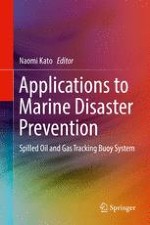2017 | OriginalPaper | Chapter
2. Lessons from Marine-Based Oil Spill and Gas Leak Accidents
Author : Naomi Kato
Published in: Applications to Marine Disaster Prevention
Publisher: Springer Japan
Activate our intelligent search to find suitable subject content or patents.
Select sections of text to find matching patents with Artificial Intelligence. powered by
Select sections of text to find additional relevant content using AI-assisted search. powered by
